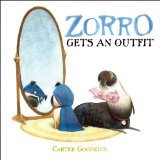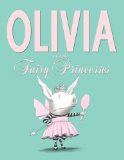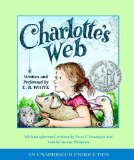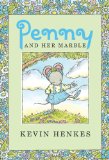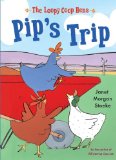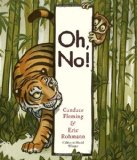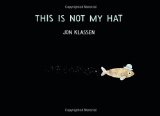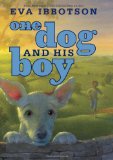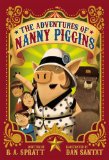 The Adventures of Nanny Piggins
The Adventures of Nanny Piggins
by R. A. Spratt
illustrated by Dan Santat
Little, Brown and Company, New York, 2010. First published in Australia in 2009. 239 pages.
Starred Review
Move over Mary Poppins! Nanny Piggins is not a nanny who teaches her charges valuable lessons. In fact, the Disclaimer at the front warns you of things to come:
You are about to read a wonderful book. Nanny Piggins is the most amazing pig ever. It has been a privilege to write about her. But before you begin I must (because the publisher has forced me) give you one small warning. . .
Unless you are a pig, do not copy Nanny Piggins’s diet IN ANY WAY.
You see, pigs and humans have very different bodies. Pigs are a different shape (mainly because they eat so much). Plus, Nanny Piggins is an elite athlete so she has a freakishly fast metabolism that can burn a lot of calories.
So please, for the good of your own health, do not try to eat like Nanny Piggins. There is no doubt that chocolate, cake, cookies, tarts, chocolate milk, sticky cream buns, candy, ice cream, lollipops, sherbet lemons, and chocolate chip pancakes are all delicious, but that does not mean you should eat them seven or eight times a day.
Also, you really must eat vegetables, no matter what Nanny Piggins might say to the contrary, or you will get sick.
Yours sincerely,
R. A. Spratt, the author
P.S. The publisher also wants me to mention that you really should not try a lot of the things Nanny Piggins does either. For example, throwing heavy things off roofs. Firstly, because you might give yourself a hernia lugging it up there. But mainly, because if it landed on someone that would be terrible. So please do not copy Nanny Piggins’s behavior (unless you are under the close supervision of a responsible adult pig with advanced circus training).
Yes, Nanny Piggins is a pig. A pig who has left the circus, where she was a flying pig shot out of a cannon. Mr. Green hires her to watch his children because she only charges ten cents an hour. Yes, Nanny Piggins’s behavior is completely outrageous — and therefore tremendous fun to read about. Sensitive parents who aren’t sure their children would fully understand why they do not apply Nanny Piggins’s methods might find this book would make an excellent family read-aloud. (Then the parents can include wise instruction as to why such behavior is not advisable. They can also enjoy the fun along with their kids.)
Here’s an example that made me laugh, from when Mr. Green gives Nanny Piggins money to buy uniforms:
Happily, as it turned out, Nanny Piggins’s idea of a good investment was to buy four tickets to an amusement park. The children had the most wonderful day. They went on all sorts of terrifying rides. On some they were flung high into the air until they were convinced they were going to die. And on others they were spun around and around until they were utterly sick.
In fact, Michael was sick. Fortunately the ride was going at full speed at the time, and the vomit flew cleanly out of his mouth and into the face of the person behind him. So Nanny Piggins did not have to trouble herself with cleaning up his clothes.
“Well done, Michael,” Nanny Piggins complimented him. “With aim like that you could get a job at the circus.”
Here’s the way Chapter Four opens:
It was seven o’clock at night, and Nanny Piggins and the children were happily crouched on the floor of the cellar, holding a cockroach race, when they heard the distinctive harrumph sound of a throat being cleared behind them.
Now, one of the first things Nanny Piggins had taught the children was what to do if someone walks in on you when you are doing something bad. So the children did exactly as they had been trained — they stayed absolutely still and did not say a word, completely ignoring the four cockroaches as they scattered across the floor in front of them. Nanny Piggins made a mental note to recatch hers later because it was a big one with long legs and it would be a shame to let it run wild. Apart from making excellent racers, cockroaches can be tremendously handy for shocking hygenic people and clearing long lines at the deli.
As the author warns us repeatedly, Do not try this at home! But you can certainly enjoy reading about it at home. And if you won’t feed your kids junk food at every meal, where’s the harm in letting them fantasize about a nanny who does? This book is full of silly, over-the-top, good-hearted fun.
raspratt.com
dantat.com
lb-kids.com
Buy from Amazon.com
Find this review on Sonderbooks at: www.sonderbooks.com/Childrens_Fiction/nanny_piggins.html
Disclosure: I am an Amazon Affiliate, and will earn a small percentage if you order a book on Amazon after clicking through from my site.
Source: This review is based on a library book from the Fairfax County Public Library.
Disclaimer: I am a professional librarian, but I write the posts for my website and blogs entirely on my own time. The views expressed are solely my own, and in no way represent the official views of my employer or of any committee or group of which I am part.
Please use the comments if you’ve read the book and want to discuss spoilers!
